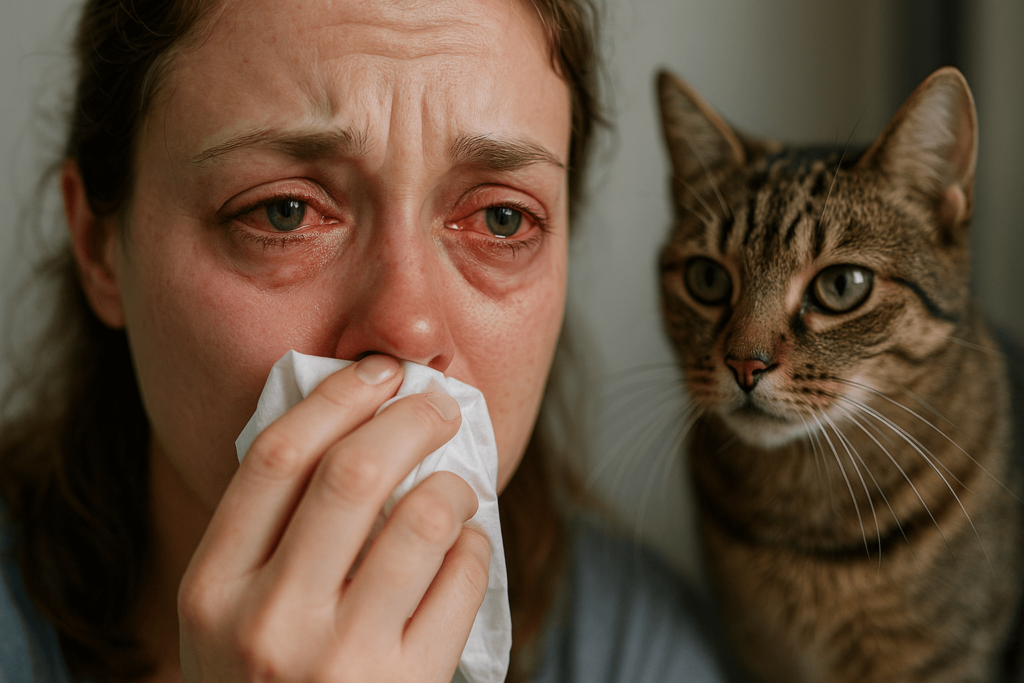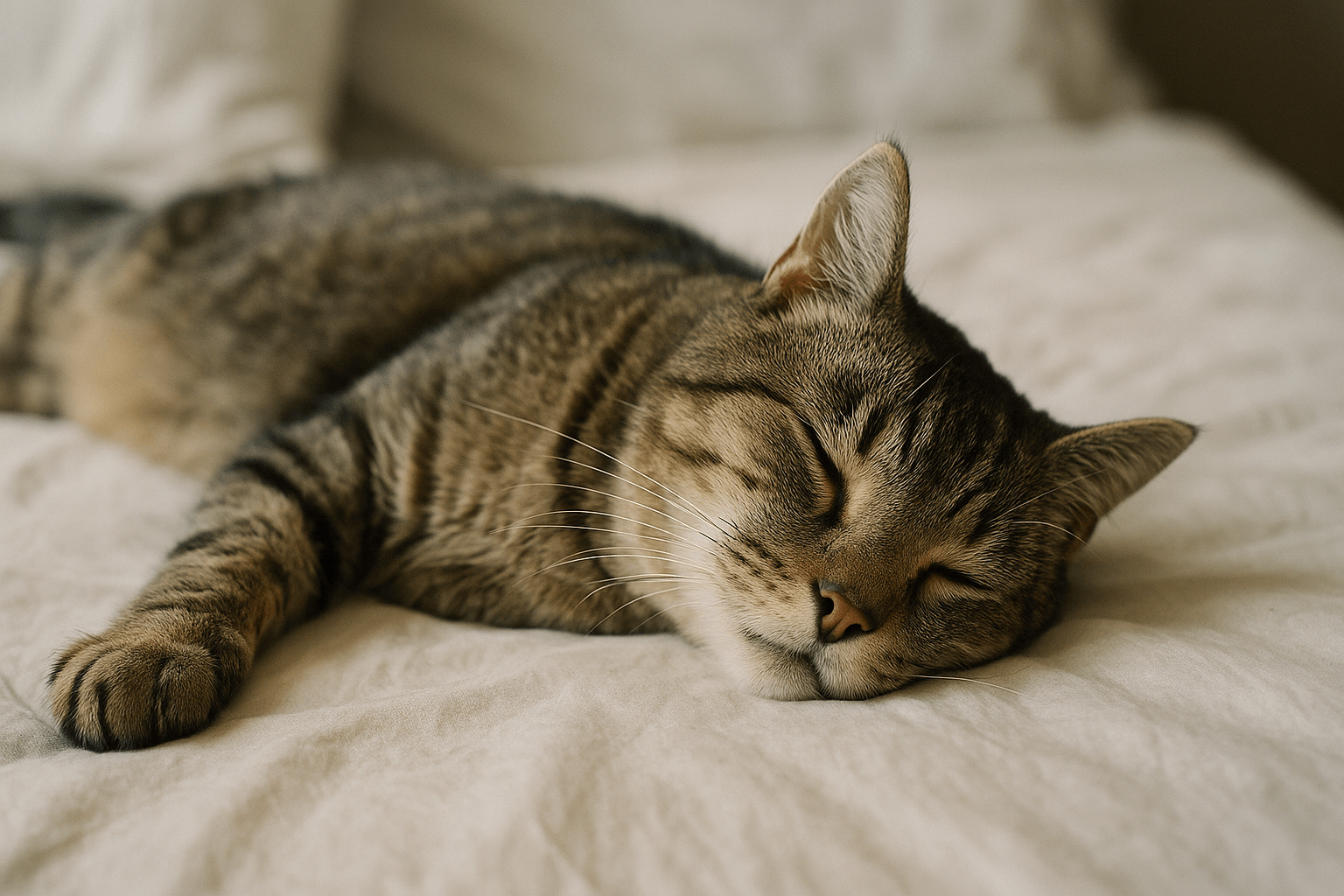Cat Allergy Eyes: Why Your Eyes Water Around Felines and How to Find Relief
If your eyes water, itch, or burn every time you cuddle your cat, you’re not imagining it — and you’re not alone. Cat allergy eyes are a common and often misunderstood reaction, affecting millions of cat lovers worldwide. It’s heartbreaking to love your feline companion but suffer discomfort just being near them. The good news? Understanding the science behind cat allergy eyes opens the door to effective, lasting relief — without giving up your furry friend. This guide dives deep into the causes, symptoms, and science-backed solutions that help you breathe easier, see clearly, and still enjoy the purrs.
Why Your Eyes React to Cats: The Real Culprits Behind Allergic Reactions
Cat allergy eyes aren’t caused by fur — that’s a widespread myth. The real trigger is a tiny, invisible protein found in a cat’s skin, saliva, and urine. When your immune system misidentifies this protein as a threat, it triggers an allergic response — and your eyes pay the price.
Fel d 1 Protein: This is the primary allergen responsible for over 90% of cat allergies. It’s produced in sebaceous glands in the skin and transferred to fur during grooming.
Dried Saliva Particles: When cats lick themselves, the saliva dries into microscopic flakes that become airborne — easily inhaled or landing on your eyes.
Dander Shedding: Tiny skin cells shed constantly from your cat’s body. These particles carry Fel d 1 and can linger for months in carpets, upholstery, and air.
Environmental Trapping: Dust, pollen, and other allergens cling to cat fur, creating a “pollen-and-allergen cocktail” that aggravates eye sensitivity.
Genetic Predisposition: If you have a family history of allergies, your immune system is more likely to overreact to cat proteins — even in low concentrations.
Your watery, itchy eyes aren’t a sign of poor hygiene or an overly sensitive personality — they’re a biological response to an allergen your body can’t tolerate. Recognizing this is the first step toward managing it.

The Most Common Symptoms of Cat Allergy Eyes
Cat allergy eyes don’t always appear alone — they’re often part of a broader allergic reaction. But when your eyes are the primary battleground, the symptoms can be especially disruptive.
Red, Bloodshot Eyes: Inflammation caused by histamine release leads to visibly dilated blood vessels in the conjunctiva.
Intense Itching: The urge to rub your eyes is strong — but scratching only worsens irritation and risks infection.
Watery Discharge: Your eyes produce excess tears as a defense mechanism to flush out the allergen.
Swollen Eyelids: Fluid buildup around the eyes can cause puffiness, making you look tired — even after a full night’s sleep.
Burning or Grittiness: Many describe it as feeling like sand is in their eyes — a constant, uncomfortable sensation.
These symptoms often worsen after direct contact with your cat — like petting, cuddling, or even just being in the same room. They may also spike during cleaning, when allergens become airborne. Understanding these signs helps you connect the dots between your cat and your discomfort — and take action before it escalates.
Check this guide 👉Herbal Remedies for Cat Allergies: Best 7 Expert Tips!
Check this guide 👉Natural Cat Allergy Remedies: Best 7 Expert Tips!
Check this guide 👉Dog vs Cat Allergies: Best 7 Expert Tips!
| Cause of Cat Allergy Eyes | How It Affects Your Eyes |
|---|---|
| Fel d 1 protein in cat dander | Triggers histamine release, causing redness and itching |
| Dried saliva particles on fur | Airborne particles land on eyes, leading to burning and tearing |
| Cat hair carrying pollen and dust | Combines with allergens to intensify eye irritation |
| Poor indoor air quality | Allergens circulate and settle on eye surfaces, prolonging exposure |
| Genetic susceptibility | Immune system overreacts even to low levels of allergens |
How Cat Allergens Spread in Your Home — And Why Your Eyes Are Always at Risk
Your cat doesn’t need to be on your lap for your eyes to react. Allergens are everywhere — and they’re incredibly persistent.
Airborne Transmission: Fel d 1 particles are lightweight and can float for hours — even after your cat leaves the room.
Clothing Transfer: Allergens cling to fabric. If your cat rubs against your sweater, you carry allergens to your eyes when you touch your face.
Bedding Contamination: Cats often sleep on beds or pillows. Dander and saliva accumulate in sheets, triggering nighttime eye irritation.
HVAC Systems: Forced-air heating and cooling circulate allergens throughout your home, spreading them to every room.
Hard Surfaces: Wood, tile, and laminate floors don’t trap allergens — they let them bounce and float, increasing exposure.
Your eyes are especially vulnerable because they’re directly exposed to the air you breathe. Unlike your nose or lungs, they have no natural barrier — making them one of the first organs to react. That’s why eye symptoms often appear before sneezing or congestion.
Top 5 Natural Ways to Reduce Cat Allergens in Your Environment
You don’t need to give up your cat to find relief. With smart environmental changes, you can drastically reduce allergen levels — and soothe your eyes naturally.
Use a HEPA Air Purifier: Place one in your bedroom and living room. HEPA filters capture 99.97% of airborne allergens, including Fel d 1 particles.
Wash Your Hands After Handling Your Cat: Always wash with soap and water before touching your face — especially your eyes.
Bathe Your Cat Weekly: Regular bathing (with cat-safe shampoo) reduces dander and saliva residue on fur by up to 84%.
Replace Carpets with Hard Flooring: Hard surfaces don’t trap allergens. If you must have rugs, choose washable ones and clean them weekly.
Keep Your Cat Out of the Bedroom: Create an allergen-free sanctuary where you sleep — your eyes will thank you in the morning.
These steps don’t require medication or drastic lifestyle changes. They’re simple, affordable, and proven to reduce eye symptoms within days.
Best Over-the-Counter Treatments for Cat Allergy Eyes
When natural methods aren’t enough, targeted treatments can provide fast, effective relief. Not all eye drops are created equal — choose wisely.
Antihistamine Eye Drops (e.g., ketotifen): Block histamine receptors to stop itching and redness at the source.
Artificial Tears (preservative-free): Flush allergens from the eye surface and soothe dryness caused by rubbing.
Decongestant Eye Drops (short-term use): Reduce redness quickly — but avoid using longer than 3 days to prevent rebound redness.
Oral Antihistamines (non-drowsy): Like loratadine or cetirizine — help reduce overall allergic response, including eye symptoms.
Cold Compresses: Apply a clean, chilled cloth over closed eyes for 10 minutes to reduce swelling and calm irritation.
Always consult your pharmacist or doctor before starting new treatments — especially if you wear contacts or have other eye conditions.
How to Choose a Cat That’s Better for Allergy Sufferers
While no cat is truly hypoallergenic, some breeds produce significantly less Fel d 1 — making them more tolerable for allergy sufferers.
Sphynx: Hairless cats still produce allergens, but without fur to trap them, allergens are easier to remove via bathing.
Bengal: Known for low shedding and a short, tight coat that holds less dander.
Russian Blue: Studies show they produce lower levels of Fel d 1 than other breeds.
Devon Rex: Their sparse, curly coat traps less allergen and sheds minimally.
Siamese: Tend to groom less frequently, meaning less saliva is spread onto fur.
Remember: Individual variation matters more than breed. Test your reaction to a specific cat before bringing one home. Spend time in the same room for at least 30 minutes — and monitor your eyes closely.
Long-Term Solutions: Allergy Shots and Immunotherapy
For those with persistent, severe cat allergy eyes, immunotherapy offers a path to lasting relief.
Allergy Shots (SCIT): Gradual injections of purified Fel d 1 protein train your immune system to tolerate it over 3–5 years.
Sublingual Drops (SLIT): A daily drop under the tongue delivers the same allergen without needles — equally effective for many patients.
Success Rates: Up to 80% of patients report significantly reduced eye symptoms after completing therapy.
Time to Results: Improvement often begins after 6–12 months — patience is key.
Insurance Coverage: Many plans cover immunotherapy — check with your provider.
Immunotherapy isn’t a quick fix — but it’s the only treatment that changes your body’s response to the allergen. For cat lovers who refuse to part with their pets, it’s life-changing.
Frequently Asked Questions About Cat Allergy Eyes
Can I outgrow a cat allergy?
Yes — especially in children. Some adults also experience reduced sensitivity over time, particularly with consistent exposure and allergen control.
Are there hypoallergenic cats?
No cat is truly hypoallergenic. But some breeds produce less Fel d 1, making reactions milder.
Does neutering a cat reduce allergens?
Yes. Neutered male cats produce significantly less Fel d 1 than intact males — up to 50% less in some cases.
Can I use an air purifier for other allergies too?
Absolutely. HEPA filters help with pollen, dust mites, and mold — making them a smart investment for any allergy sufferer.
Do cat allergies get worse over time?
They can — especially with repeated exposure without management. Early intervention prevents sensitization from worsening.
Embrace Your Cat — Without Sacrificing Your Comfort
Cat allergy eyes don’t have to mean saying goodbye to your feline companion. With the right knowledge, tools, and consistency, you can reclaim your comfort — and your connection. It’s not about eliminating your cat from your life; it’s about redesigning your environment to protect your eyes, your health, and your heart. The science is clear: allergens can be reduced. Symptoms can be managed. And your bond with your cat? That’s stronger than any protein.
You don’t have to choose between love and relief. You can have both.
Why Is My Cats Second Eyelid Showing? Best 7 Expert Tips! Understand causes, health signs, and how to respond when your cat’s third eyelid becomes visible.
How Do I Know If My Cat Died Peacefully? Best 7 Expert Tips! Discover the quiet signs of a peaceful feline passing and find comfort in their final moments.
Cat Allergy Eyes: Best 7 Expert Tips! Discover why your eyes react to cats and learn proven strategies for relief—without giving up your feline friend.
Why Do Abyssinian Cat Colors Matter? Best 7 Expert Tips! Discover the genetics, rare hues, and care secrets behind Abyssinian coat colors for a healthier, happier cat.




